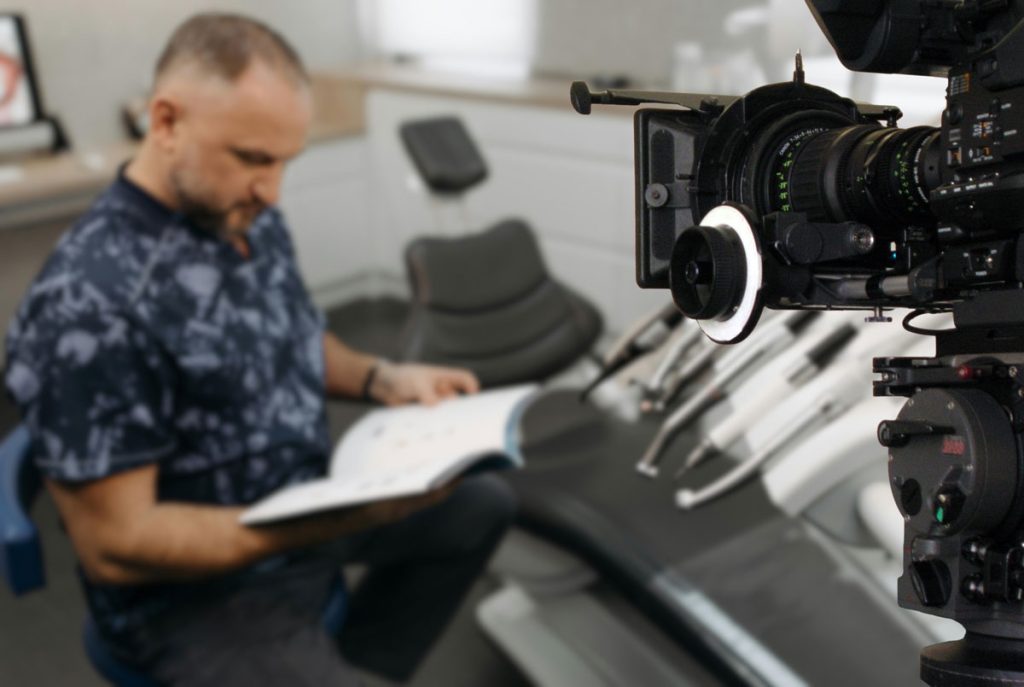What Are the Steps in Video Production?
Video production is more than just hitting “record” on a camera. It’s storytelling, planning, coordination, and technical mastery all rolled into one. Whether you’re a business wanting to promote a product, a nonprofit sharing a message, or a content creator building a brand, understanding the steps in video production can save time, money, and headaches.
In Memorial, professional teams like Nightwolf Productions follow a structured workflow that ensures every project from concept to delivery is smooth, efficient, and visually stunning.
Let’s break down each stage and see how you can approach your next video project with confidence.
Quick Roadmap: The Three Big Stages
Video production generally unfolds in three key stages:
- Pre-production – Planning and preparing everything before the camera rolls.
- Production – Shooting the video according to your plan.
- Post-production – Editing, polishing, and finalizing the video for distribution.
Think of it like cooking a gourmet meal. Pre-production is shopping for ingredients and prepping the kitchen. Production is cooking the dish. Post-production is plating and garnishing it to look irresistible. Skipping steps in any stage can lead to disasters on the final product.

Pre-production: Idea to Plan
Pre-production is the foundation of your video. Spend time here, and the rest of the process becomes far easier.
Concept & Creative Brief
Every video starts with an idea. But ideas need direction. A creative brief is a one-page document outlining the goal, audience, tone, and key message. Ask yourself:
- Who will watch this video?
- What message must they understand?
- How should they feel after watching it?
This brief becomes the North Star, guiding every decision in production.
Tip: Keep your brief simple but detailed enough to prevent confusion. Include deadlines, deliverables, and platform preferences (YouTube, Instagram, social media ads, etc.).
Scriptwriting and Narrative Structure
Scripts translate your concept into action. A script doesn’t just include dialogue; it describes shots, transitions, and visual cues.
- Start strong: Grab attention in the first 5 seconds.
- Structure like a story: Beginning, conflict, and resolution.
- Keep sentences short: Natural speech is easier to deliver and edit.
Shooting Script and Technical Notes (H4)
A shooting script organizes scenes, camera angles, and technical requirements like lens selection, lighting setups, and special effects notes. This step ensures every crew member knows what to film and how.
Storyboarding and Shot Lists
Storyboards are visual guides showing how scenes will look. Shot lists are detailed lists of every shot needed. Together, they:
- Save time on set.
- Reduce confusion between director and crew.
- Ensure coverage for every angle and scene.
Even simple stick-figure sketches work if they clearly communicate camera framing and movement.
Budgeting and Scheduling
Budgeting determines what’s possible. Include:
- Crew salaries and talent fees
- Equipment rental
- Location fees and permits
- Meals and transportation
- Post-production costs
Scheduling includes deadlines, shooting days, and post-production milestones. Always add 15–20% extra time for unexpected issues.
Casting, Crew, and Locations
Casting isn’t just about looks; it’s about believability and energy. Crew members should be experienced and reliable. Scouting locations early allows you to:
- Test lighting conditions
- Check noise levels
- Plan for logistics like parking and electricity
Permits, Insurance, and Logistics
Never assume you can shoot anywhere without permission. Secure:
- Location permits
- Talent releases
- Insurance coverage for accidents
Logistics like call sheets, transportation, and meal planning ensure smooth days on set.
Production: Bring the Plan to Life
Production is where planning meets action. It’s fast-paced and requires coordination, focus, and flexibility.
Equipment, Camera, and Lenses
Choose cameras and lenses that fit the project’s style. Test every piece of equipment before shooting. Always pack spares like batteries, memory cards, and cables.
- DSLR or mirrorless for small projects
- Cinema cameras for high-end commercials
- Specialty lenses for cinematic effects
Lighting for Mood and Clarity
Lighting creates atmosphere and ensures clarity.
- Three-point lighting is standard for interviews.
- Motivated lighting matches the scene’s natural light.
- Diffusion softens harsh light for flattering skin tones.
Adjust lighting for indoor and outdoor conditions and be ready for sudden changes, especially in Memorial where sunlight varies quickly.
Sound Capture and On-Set Mixing
Sound quality influences how professional a video feels. Record clean dialogue and ambient sounds. Use lavalier mics for actors and boom mics for scene audio. Monitor sound carefully to avoid post-production headaches.
Directing, Blocking, and Performance
A director ensures actors deliver authentic performances and camera movements align with the story. Block scenes to prevent continuity errors and allow smooth transitions between shots. Positive energy and clear instructions make a world of difference on set.
B-Roll, Pickups, and Continuity
B-roll footage is extra content used to enhance storytelling. Examples include close-ups of objects, environment shots, or background activity. It’s invaluable for editing, transitions, and covering mistakes. Keep continuity in mind: costumes, props, and lighting must remain consistent across shots.

Post-Production: Polish and Finish
Post-production is where your footage transforms into a polished story.
Ingesting Footage and Logging
Organize all media with clear folder structures. Back up footage immediately to prevent loss. Logging selects and notes speeds up the editing process.
Editing – Rough Cut to Fine Cut
Editing begins with a rough cut following the script, then progresses to a fine cut:
- Trim unnecessary footage
- Adjust pacing
- Ensure narrative clarity
Feedback rounds should be structured with clear goals, such as pacing, tone, or visual style.
Sound Design, Mixing, and ADR
Good audio brings realism and immersion. Add sound effects, clean dialogue, and mix levels. Use ADR (automated dialogue replacement) for any lines that didn’t record cleanly on set.
Color Correction and Color Grading
Correct color inconsistencies across shots first, then grade for style. Proper grading enhances mood and professionalism without making the footage look unnatural.
Visual Effects and Motion Graphics
Add titles, lower thirds, or motion graphics as needed. Ensure VFX support the story, not distract from it.
- Match lighting and camera motion
- Keep designs simple and readable
Delivery, Distribution, and Launch
Export Settings and Codecs
Export for multiple formats:
- Master file: ProRes or DNxHR
- Compressed web version: H.264/H.265
- Social media edits: vertical or square
Platforms: Social, Broadcast, Web
Tailor videos for platforms. YouTube allows long form, Instagram prefers shorter clips, and Facebook favors engaging thumbnail imagery.
Marketing, SEO, and Metadata
Title, description, and keywords help videos get discovered. Include a call to action and ensure metadata aligns with your target audience.
Project Wrap: Archive, Invoices, Lessons
Archive all files, send invoices, and review lessons learned. Back up masters and raw footage in multiple locations. Hold a post-mortem with your team to identify successes and areas for improvement.
Common Mistakes and Quick Fixes
- Neglecting sound: Record multiple takes and use high-quality mics.
- Over-scheduling: Keep realistic shooting days.
- Skipping call sheets: Send detailed sheets 24–48 hours ahead.
- No backups: Duplicate media immediately.
- Unclear brief: Confirm script and objectives before production.
Sample Production Timeline
Day −21 to −14: Finalize script, cast, scout locations.
Day −14 to −7: Secure permits, schedule, and equipment.
Day −3: Test equipment, rehearse, pack.
Day 0–2: Shoot production.
Day 3–14: Rough and fine editing, sound work.
Day 15–20: Color grading, titles, client review.
Day 21: Final delivery, archive, invoice.
Nightwolf Productions: Video Production Steps for Memorial
Nightwolf Productions follows all steps meticulously for clients in Memorial. We combine local knowledge with professional standards: scouting Memorial neighborhoods, testing lighting, managing traffic noise, and delivering polished videos tailored for local audiences. Our approach ensures each project communicates clearly and resonates with viewers.
Nightwolf Productions Serving the Memorial Community and Beyond in Houston
Nightwolf Productions is dedicated to serving the diverse needs of the local community of Houston, including individuals residing in neighborhoods like Memorial. With its convenient location near landmarks such as the Texas Health School and major intersections like Britoak Ln. & N Kirkwood Rd. (coordinates: 29.782089760236744, -95.58899988793047), we offer dental practice marketing videos Houston services.
Get Dental Practice Marketing Videos at Memorial Now
Navigate from Memorial to Nightwolf Productions Now
Crafting Impactful Videos: From Concept to Completion
Video production is a structured process of creativity and technical skill. Pre-production lays the foundation, production captures the vision, and post-production transforms raw footage into a finished story.
Following these steps, using clear checklists, and leveraging professional teams like Nightwolf Productions ensures your Memorial projects run smoothly, stay on budget, and leave a lasting impression.
FAQs
1. How long does a typical video production take?
Small projects can take 2–3 weeks; larger campaigns may span several months depending on complexity.
2. What’s most important in pre-production?
A clear creative brief and script. They guide every decision, preventing costly mistakes later.
3. How critical is sound compared to visuals?
Sound is crucial. Poor audio can make high-quality visuals feel amateurish.
4. Do I need permits to shoot in Memorial?
Yes, especially in public areas or private properties. Plan ahead to avoid interruptions.
5. How should I select a production company?
Look for experience, clear processes, responsive communication, and a solid portfolio.
Related News







